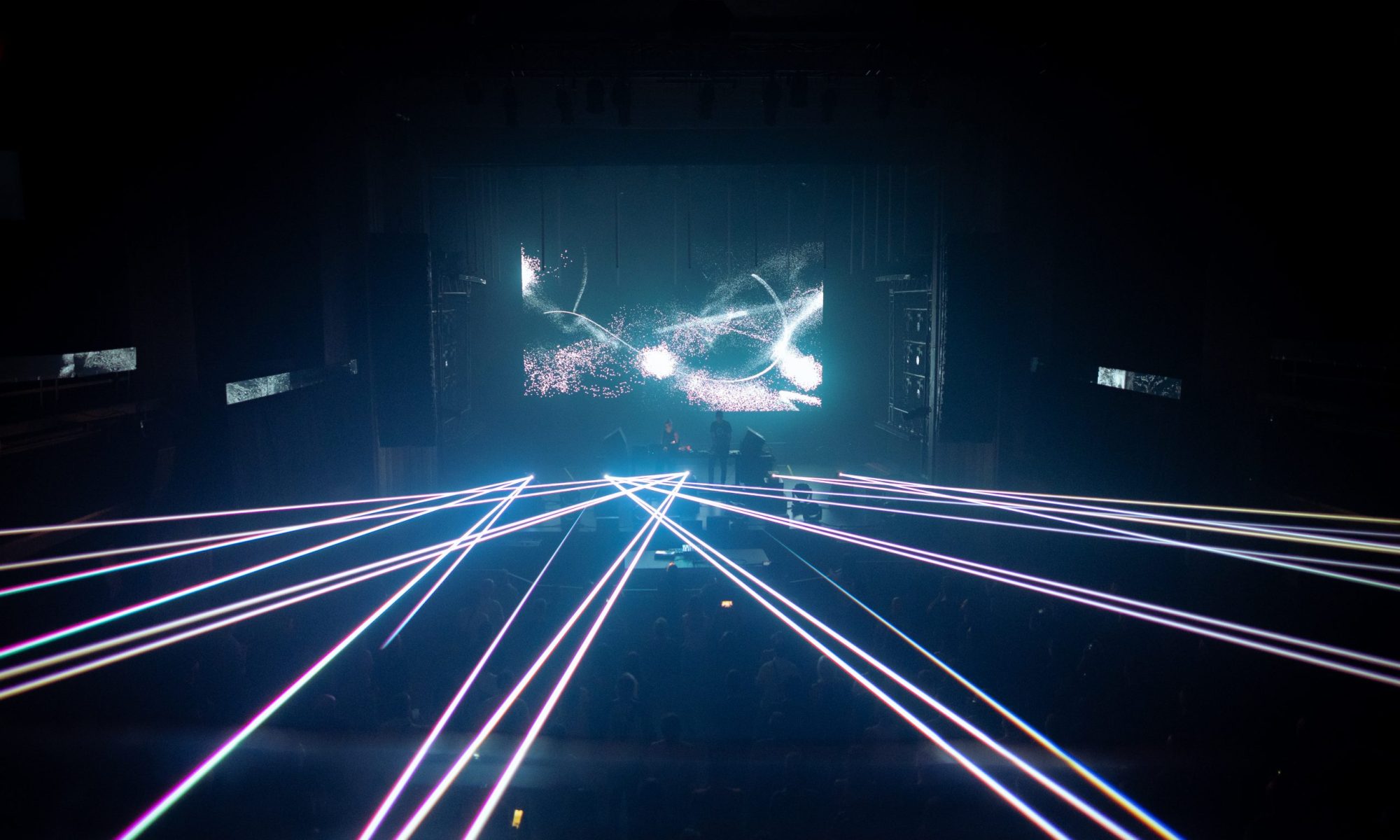Le Devoir
Philippe Renaud
Collaborateur22 août 2023
En presque 25 ans de carrière, la compositrice et « sculptrice de sons » France Jobin a tissé une oeuvre électronique fascinante, dense, aux contours minutieusement détaillés par ces notes sur lesquelles on dirait qu’elle s’amuse à tirer comme on fait défiler une balle de laine. Inspirée par la physique quantique, Jobin met en musique sa conception de la théorie des cordes ou encore de l’intrication quantique, cette dernière balle de laine servant de prémisse de la performance Entanglement qu’elle offrira samedi, à Mutek, en duo avec l’artiste visuel Markus Heckmann.
Pour résumer grossièrement, Entanglement, l’intrication (ou enchevêtrement) quantique définit la relation d’interdépendance persistant entre deux particules (ou groupes de) malgré la distance pouvant les séparer. « Un des éléments de la physique quantique qui me frappe, mais qui n’est pas directement relié à l’intrication quantique, c’est que l’écoulement du temps n’existe pas, dit France Jobin. Ainsi, en physique quantique, on a dix ans, vingt ans, soixante ans, tout ça en même temps, et je trouve ça très beau, d’autant que Markus et moi travaillons avec des médiums qui sont basés sur le temps. Entanglement est en quelque sorte notre interprétation, en son et en image, de ces phénomènes. »
D’une durée de trente minutes, la performance mettra à l’essai les nouvelles installations du dôme de la Société des arts technologiques, qui vient de rouvrir ses portes aux créateurs et au public. France Jobin est ravie : « C’est le jour et la nuit » entre l’ancien et le nouveau système de sonorisation, doté de 93 haut-parleurs finement calibrés. Les projecteurs sont aussi plus brillants et plus précis qu’auparavant, fournissant aux créateurs un formidable écrin à la fine pointe de la technologie.
Le sujet de la physique quantique attirait déjà France Jobin, mais la pause forcée de la pandémie lui a donné tout le temps voulu pour l’approfondir, d’abord auprès d’un doctorant de l’Université de Birmingham (deux autres théoriciens de la physique quantique ont ensuite collaboré avec Markus et elle). Entanglement est donc une interprétation, partagée par le duo, mais aussi liée à des événements récents survenus dans la vie de la musicienne.
« Au moment où j’ai commencé à étudier l’intrication quantique m’est arrivé un événement traumatique, confie France Jobin. J’ai perdu ma mère, puis ma soeur, en l’espace de sept mois. La physique quantique m’a accompagnée dans le deuil. Je suis alors devenue totalement zen — moi qui étais toujours anxieuse ! En étudiant la physique quantique, j’ai compris que ça ne servait à rien de s’énerver, d’essayer de régler des choses avant qu’elles n’arrivent. La physique quantique m’a rendue zen, malgré le chaos et l’incertitude de la vie. »
Une « drôle de démarche artistique »
La compositrice, qui lançait en mai dernier l’album 10-33CM sur l’étiquette australienne Room40, a une « drôle de démarche artistique », dit-elle. Formée au piano classique, elle s’est rapidement désintéressée du répertoire, « parce que je trouvais que ça n’avait pas d’allure que je ne puisse pas aller prendre un café avec Mozart ou Beethoven pour comprendre ce qui se passait dans leur tête lorsqu’ils composaient pour ensuite donner la meilleure interprétation possible de leurs oeuvres ». Elle a ensuite joué du blues « dans les bars de la ville et au Festival international de jazz de Montréal — ce fut mon initiation au minimalisme, et à la sonorisation : dans un bar, l’espace n’est jamais le même, s’il y a une fenêtre derrière la scène, je sais tout de suite qu’on sera dans le trouble ».
Une rencontre en studio avec le compositeur et concepteur sonore montréalais David Kristian l’a fait basculer dans le monde de la musique électronique expérimentale : « Il s’est mis à jouer ce genre de musique, et je me suis dit : mon Dieu ! Je n’ai jamais entendu quelque chose comme ça ! Un coup de foudre, une lumière qui s’allume : c’était ce que je cherchais à faire, depuis la musique classique. Une musique sans contraintes, sans portée à lire, sans clé, sans tempo, je pouvais me défaire de tout ça », mentionne la compositrice, qui cite l’influence du travail des collègues Richard Chartier ou encore le maître de la musique ambient William Basinski, qu’on verra le 30 août aux Foufounes électriques, avec France Jobin (et Jessica Moss) en première partie.










